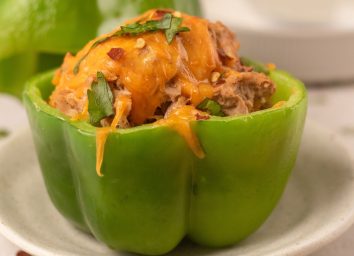5 Cooking Secrets Only Mexican Chefs Know
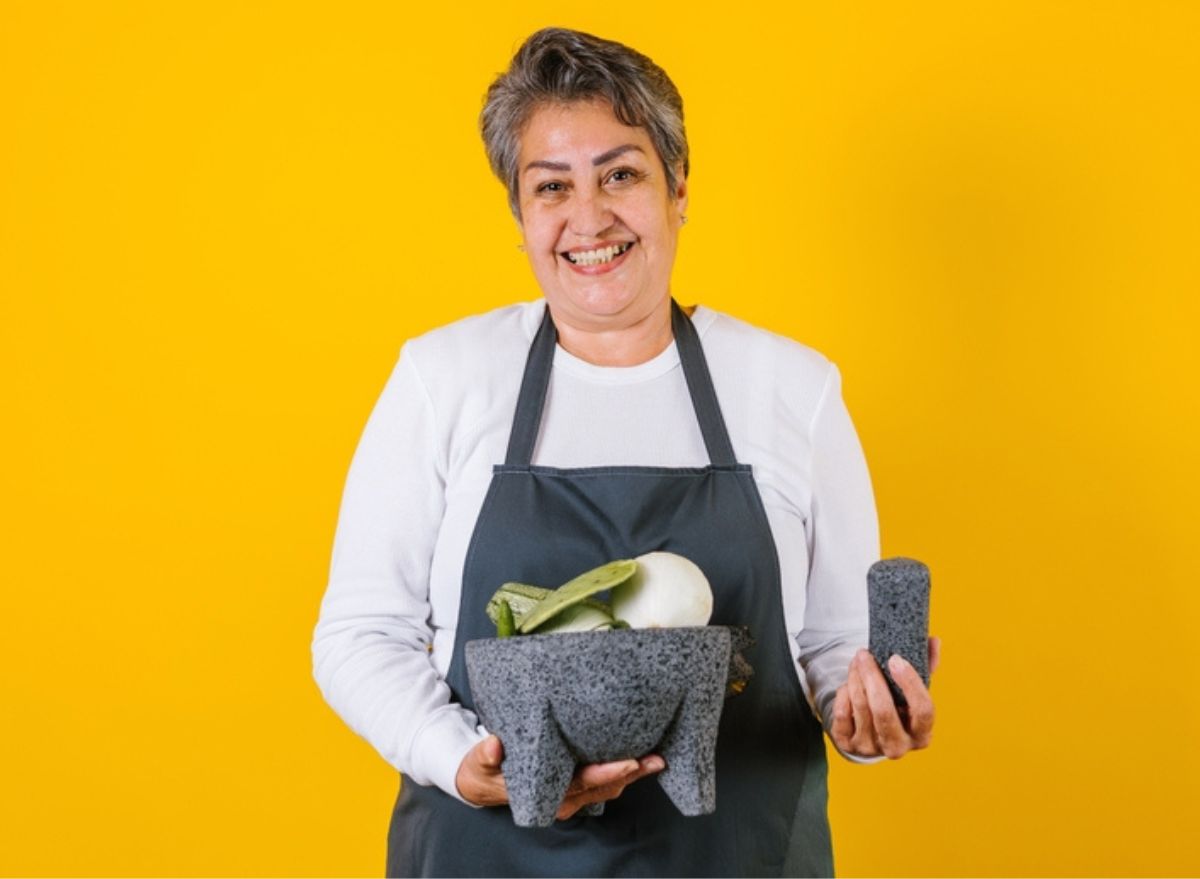
In honor of Hispanic Heritage Month, celebrate traditions and historic food by whipping up some authentic Mexican food. Try having some tender barbacoa tacos, topped with homemade salsa verde, alongside a bowl of crispy tortilla chips with the freshest and most flavorful guacamole to ever grace your tastebuds. Maybe there's a tower of cheesy, spicy nachos, smothered in jalapenos with your name on it. Either way and no matter what your favorite dish may be, this is the month to try and cook food the way Abuela intended.
If you're looking to make up authentic Mexican cuisine from the comfort of your home, you've just hit the jackpot. Here are five cooking secrets only Mexican chefs know to help you on your way. Hope you're in the mood for a plate of spice!
And if you're still hungry for dessert, check out 8 Baking Secrets They Only Teach You in Pastry School.
Exact measurements don't really exist in Mexican kitchens.
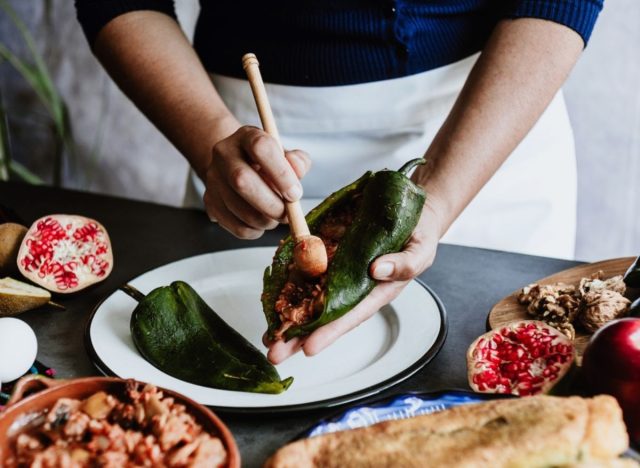
In true Abuela fashion, "mide con tus manos," or measure with your hands. It's not uncommon for recipe cards in a Mexican kitchen to be missing exact measurements beside the ingredient list. Authentic dishes are made with a keen eye for precision and a handful (or more) heart.
In 2019, Doña Angela started a YouTube cooking page called "De mi Rancho a Tu Cocina" (From My Ranch To Your Kitchen) and instantly became internet famous for her authenticity and ability to bring Abuela's food right to your screen. In an interview with NPR, Angela says, "I just grab with my fingers," and she explains that all you need is love and care, because "food cooked without it isn't any good."
The best guacamole doesn't need a lot of seasoning.
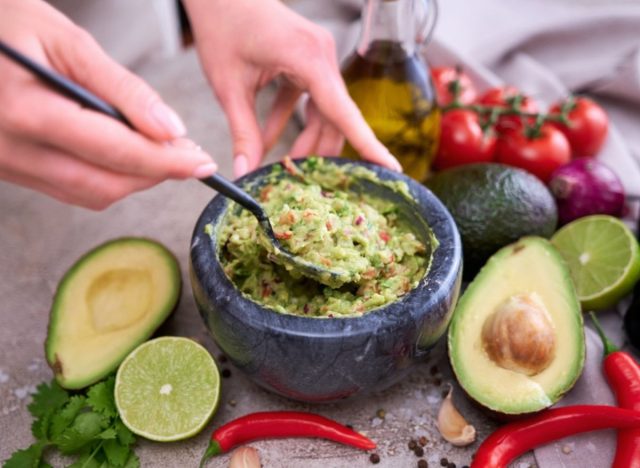
Chips and guac is an obvious staple when you sit down at any Mexican restaurant. But when that craving strikes at home, don't be so quick to reach for a ton of ingredients like cream or so many spices. The biggest secret to making authentic guacamole is only using the key components at their peak of freshness—avocados, tomatoes, chilli, cilantro, salt, and a good squeeze of lime—said Edson Diaz-Fuentes, Mexico City native chef and co-founder of London's Santo Remedio restaurant, in an interview with Delish.
The smooth, creaminess we all want in a good guacamole will come from using the ripest avocados you can find, Diaz-Fuentes explains. And as simple as it may seem, the few ingredients listed above provide plenty of flavors that you don't want to overwhelm with excess elements. Diaz-Fuentes says it's better to stay away from pepper, paprika, or any other dried spices that could overpower your refreshing chip dip.
You can use modern cooking methods and still create authentic dishes.
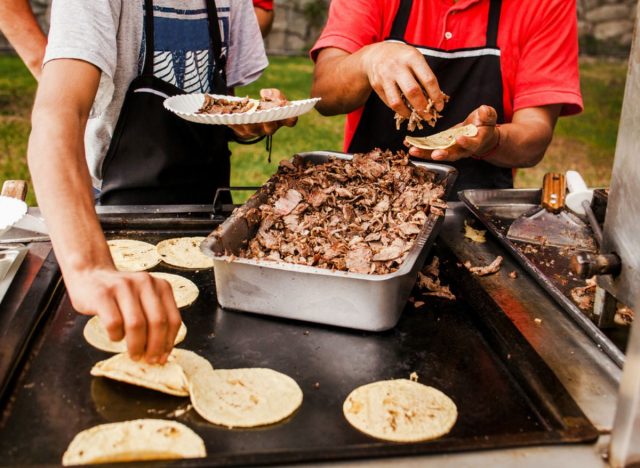
Early on in Mexican heritage, especially before ovens were widely available, it was best practice to cook most all foods over an open fire and/or using cast iron or ceramic kitchenware. However, now that times have changed and cooking appliances have grown exponentially, many Mexican chefs use these new methods to continue bringing together old-school recipes and flavors.
Today, there are metal grinders on the market that make it easier to mash corn and get the perfect masa consistency for tamales, according to Chelsie Kenyon, author of "Knack Mexican Cooking: A Step-By-Step Guide to Authentic Dishes Made Easy". And while meats were often steamed over boiling water back in the day, since modern upgrades, cuts of beef—such as barbacoa and birria—are put through a similar process using a dutch oven, Kenyon goes on to say. The secret is using an oven to slowly roast meats can help pack in potent flavors and lock in the most delicious moisture. Grilling has also greatly enhanced Mexican dishes, whether that be a good piece of marinated carne asada or lending a smoky hand to fresh vegetables to bring out the authentic taste of how they used to cook on an open fire.
Know how to keep your salsas and sauces in check.
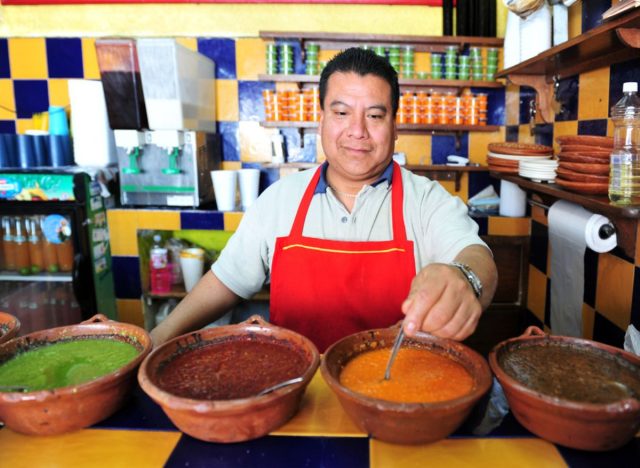
There are numerous types of salsa and sauces used in Mexican cuisine, and many of which are one of the main components of a specific dish. Since various meals depend on certain sauces, it's important to master the recipes and use the correct proportions for everything you need, explains Don Emilio, a beloved brand of Mexican hot sauces sold in 32 U.S. states.
Mole sauce, for example, is a sauce that's typically chocolate-based and used in stew dishes, enchiladas, and meat plates. Foods are often drenched in this sweet and savory sauce with an unbelievable spicy kick, which is why the ratio of rich chocolate and a variety of peppers, nuts, and spices is crucial.
Salsa, on the other hand, needs love, attention, and time to simmer and blend into a punch of great flavors. According to Don Emilio, since there are so many salsa options out there it's also best to practice making all them to find what tastes and ingredients you enjoy the most. However, you also stick to the simple and classic salsas, because when done right, they can make any dish even tastier—ones such as salsa verde (tomatillo tomato-based), pico de gallo (mixture of tomatoes, onions, and peppers), ranchera salsa (mashed tomatoes, peppers, and garlic), and Veracruz salsa (tomato and green olive-based).
It's best to make everything you can from scratch.
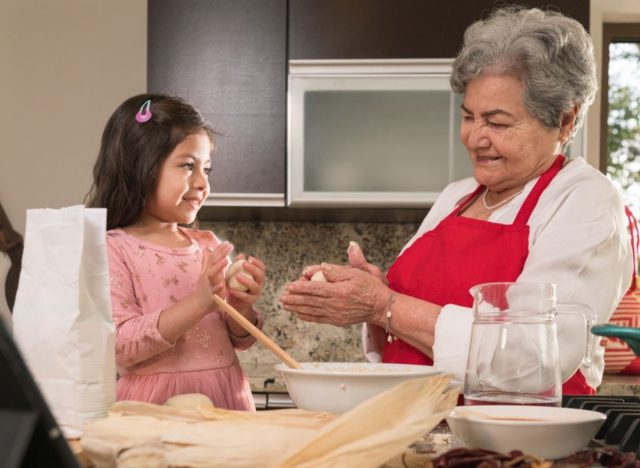
While it may be convenient to buy pre-packaged cooking components—such as rice, salsas, tortillas, or beans—cooking from scratch is a part of a tradition. To make an authentic staple, such as beans, you cannot just dump a can of the bland, mashed-up mixture into a pot. Not a single person in Mexico would think twice about cooking anything other than fresh, dried beans that are boiled to a soft consistency with a slight touch of salt (and/or possibly onions), Kate Elliott writes, chef and contributing writer for Cooktop Cove.




